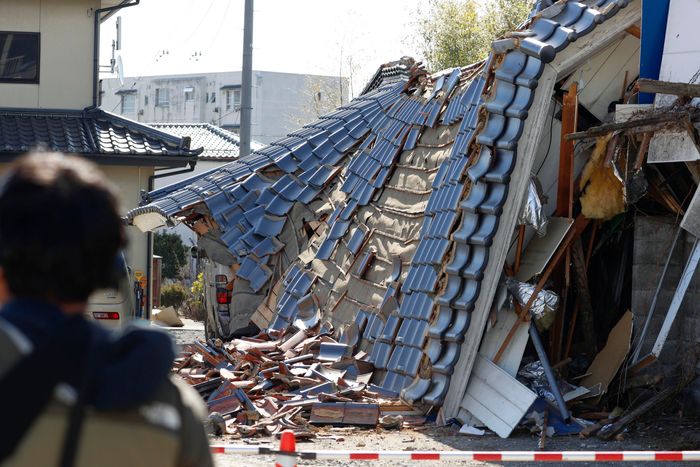A potent 7.5-magnitude earthquake struck central Japan on Monday, as reported by the US Geological Survey (USGS), leading to tsunami warnings and urgent appeals from authorities for residents in the affected region to seek higher ground.
The quake, centered in the Noto region of Ishikawa prefecture at around 4:10 pm (0710 GMT), prompted the Hawaii-based Pacific Tsunami Warning Center to issue alerts, indicating the potential for hazardous tsunami waves within 300 kilometers (190 miles) of the quake’s epicenter along the Japanese coast.
National broadcaster NHK issued a stern advisory, stating, “All residents must evacuate immediately to higher ground” following the seismic activity.
Wajima city in Ishikawa prefecture experienced a confirmed tsunami of 1.2 meters, while the Japan Meteorological Agency (JMA) anticipated a much larger tsunami, reaching five meters in Noto within the same region.
The JMA reported a rapid succession of quakes in the Noto region, starting with a 5.7-magnitude tremor at 4:06 pm local time, followed by a 7.6-magnitude quake at 4:10 pm, a 6.1-magnitude quake at 4:18 pm, a 4.5-magnitude one at 4:23 pm, a 4.6-magnitude quake at 4:29 pm, and a 4.8-magnitude quake at 4:32 pm. Subsequently, another quake with a magnitude of 6.2 occurred.
Broadcasters interrupted regular programming to issue urgent appeals for residents to move to higher ground. NHK presenter conveyed, “We realize your home, your belongings are all precious to you, but your lives are important above everything else. Run to the highest ground possible.”
While Japan maintains strict construction regulations to withstand strong earthquakes and conducts regular emergency drills, the nation is haunted by the memory of the devastating 9.0-magnitude quake in March 2011, triggering a tsunami that resulted in approximately 18,500 casualties and the Fukushima nuclear disaster. In March 2022, a 7.4-magnitude quake off the coast of Fukushima claimed three lives, while Tokyo faced significant devastation from a massive earthquake in 1923.


